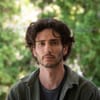Detroit’s geography of despair includes many seeds of hope
DETROIT – It’s hard to communicate the failure of public policy in this great American city (especially in a few hundred words). A drive around town highlights the consequences from decades of neglect: Abandoned and burned out homes, office buildings as ruins (and dangerous playgrounds), near-permanent unemployment, and thousands of empty lots capped with mounds. These mounds are burial sites of sorts because when a building was destroyed the rubble was left in a pile until time and grass shaped each into a small hill.
Yet the geography of despair includes many seeds of hope.
One east side neighborhood is transformed by inspiring folk art that brings humor and zest to several city blocks through The Heidelberg Project. Or there is the Community Health Awareness Group’s efforts to exchange needles so that drug users on the streets won’t as easily share disease. The program resulted in a drop of HIV infections from drug users from 33 percent to 17 percent. (And that, too, is the paradox because while an exchange is effective, it’s also difficult to fund). Then there’s the Earthworks Urban Farm. Detroit is a city without large chain grocery stores – only discount stores and “party stores,” or neighborhood enterprises that sell more liquor than protein. Access to fresh fruit and vegetables is a regular barrier for a family trying to eat healthier. But at Earthworks more people – at least in this one neighborhood – are growing their own access to healthy foods.
The trip was a Kaiser Family Foundation site visit for media fellows. We looked at Detroit and its health system in depth. Before the trip, I expected the unfamiliar, an urban landscape that was different and bleak. But I quickly found there is a connection with the policy failures found here with those from Indian Country. At the end of that rope: Deep, structural poverty and a health system where disparity is dismissed casually, as if it’s a fact that must be. To me that reflects a serious shortage of money from the state and federal governments – and just as important – a policy deficit where ideas, innovation and execution don’t get the support that’s needed.
Consider the tale of two clinics.
American Indian Health and Family Services helps the 57,000 Native Americans living in the greater Detroit area. Services are delivered at an old church and rectory donated by the Detroit Archdiocese in 1993. Jerilyn Church isthe executive director of AIHFS. She’s Minnecoujou Lakota, born and raised on the Cheyenne River Sioux reservation in South Dakota. When she moved to Detroit she says she “wasn’t prepared” for the same type of unemployment as back home on the reservation.
“Yet despite our surroundings, we get a lot done with little resources,” Church says. “We could write a book about it.”
That book would detail the logistics of serving people who are mostly uninsured – and too often ineligible for safety net programs like Medicaid. Among the AIHFS clients only about a third have full-time employment. So when a patient requires health services beyond the basics of the clinic, the health provider – a doctor or a practical nurse – spends hours on the phone looking for a doctor or hospital that will provide “uncompensated care.” So instead of treating people, these health professionals must act as brokers, looking for someone, anyone, in the health care system to help.
The paradox that is urban Indian health is that more than two-thirds of American Indians and Alaska Natives live in cities and yet receive only about one percent of the Indian Health Service budget. There is hope, however, because of health reform and the Indian Health Care Improvement Act. The new law, Church says, should make it possible to hire at least one more health professional for the clinic. Another possibility down the road is to qualify American Indian Health and Family Services as a “Federally Qualified Health Center.” This is a designation that opens up the potential for additional federal funds, as well as better malpractice protections.
Indeed, the idea of a FQHC – as it’s known in Fed Speak – opens up other possibilities as demonstrated by the second clinic in this story. The Community Health and Social Services Center, or CHASS, started in 1970 to serve the Latino population in Detroit.
Today CHASS operates a comprehensive care network, at clinics that serve Latino and African American neighborhoods, serving a population that 86 percent uninsured. Yet this FQHC has found a business model that works: CHASS has developed an unusual relationship with the Henry Ford Health System. The physicians are employees of Henry Ford and there is essentially a budget plan for uncompensated care. What’s in it for the Ford hospital network? Simple: It’s much cheaper to budget for a visit to a CHASS clinic than it is for that same patient to show up in an emergency room. So that’s where traffic is directed: Both CHASS and Henry Ford encourage people to make appoints for chronic care, dental or routine office visits. This benefits both parties because the hospital system controls costs, and the patients stay healthier.
Across the country there are so many committed people who find new ways to make a difference. As health care reform goes from concept to program there is much hope that seeds of excellence, like these planted in Detroit, will get the nutrition that’s needed to thrive.
Mark Trahant is a n advisory board member of InvestigateWest and a Kaiser Media Fellow examining the Indian Health Service and its relevance to the national health care reform debate. He is a member of Idaho’s Shoshone-Bannock Tribes.
The story you just read is only possible because readers like you support our mission to uncover truths that matter. If you value this reporting, help us continue producing high-impact investigations that drive real-world change. Your donation today ensures we can keep asking tough questions and bringing critical issues to light. Join us — because fearless, independent journalism depends on you!
— Jacob H. Fries, executive director
DonateCancel anytime.









